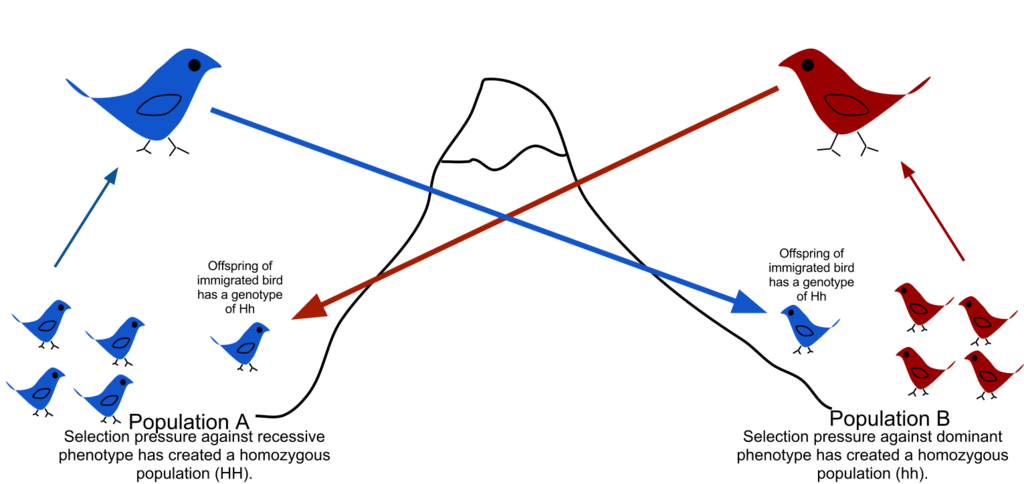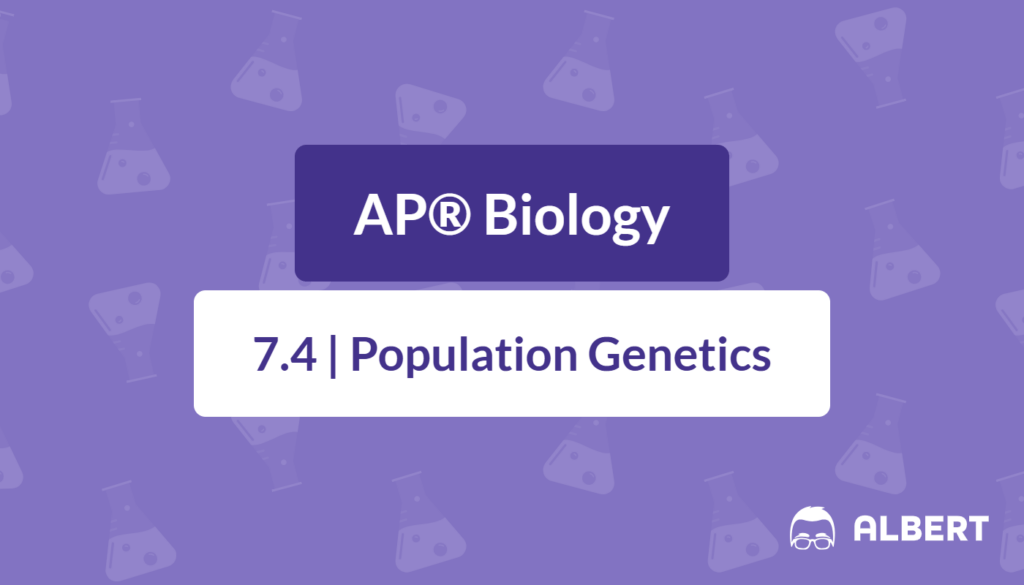Population genetics is the study of how genetic variation changes over time within populations. By focusing on processes such as genetic drift, mutation, and migration, this field offers key insights into the mechanisms of evolution. Below is a comprehensive overview tailored to help you master the basics for the AP® Biology exam and beyond.
What We Review
What Is Population Genetics?
Population genetics examines allele frequency changes—slight variations in the forms of genes—across generations. The diversity of these alleles is central to how populations adapt and evolve. A robust gene pool can increase a population’s resilience to environmental changes, disease outbreaks, or other ecological stresses. A population’s gene pool refers to all the genes and their alleles in that population. Genetic diversity fuels the potential for adaptation and survival.
Random Processes Affecting Genetic Makeup
A. Role of Mutation in Evolution
Mutations are changes in DNA sequences that can occur spontaneously or due to external factors (e.g., radiation, chemicals). These changes can be as small as a single base pair substitution or as large as rearranging entire chromosome segments. Most mutations are neutral or harmful, but occasionally, a mutation can be beneficial, offering a competitive advantage. Over generations, these beneficial mutations can spread through the population, increasing the population’s overall fitness.
B. Genetic Drift
Genetic drift is the random change in allele frequencies from one generation to the next. Unlike natural selection, which is driven by differential survival and reproduction tied to specific traits, genetic drift operates by chance—without regard to an allele’s adaptive value. In a small population, random events have a relatively larger impact. For instance, losing a few individuals carrying a specific allele can drastically reduce that allele’s frequency. Conversely, in a large population, such random losses are less likely to diminish allele frequencies dramatically.
Some key concepts in genetic drift include:
- Bottleneck Effect:
- Occurs when a population undergoes a drastic reduction in size due to events like natural disasters or disease outbreaks.
- The small surviving population may not represent the genetic diversity of the original group, leading to reduced variation.
- Example: Northern elephant seals once faced extreme hunting that reduced their numbers. The population that rebounded had far fewer genetic variants than the original group.
- Founder Effect:
- Occurs when a small group from a larger population migrates and establishes a new population.
- Because the “founders” carry only a fraction of the original population’s alleles, the new population may quickly diverge genetically.
- Example: The Afrikaner population in South Africa, founded by a small group of Dutch settlers, has a higher frequency of certain genetic disorders compared to the larger Dutch population.
How Genetic Drift Leads to Evolution in a Population
Genetic drift changes allele frequencies by chance. Even if an allele does not confer an advantage, it can become widespread or disappear based solely on random events such as which individuals breed or survive. Over many generations, these shifts can significantly alter the population’s gene pool, thus driving evolution on a population level. For example, a population of 50 rabbits may lose the allele for white fur if just a few white-furred rabbits fail to reproduce. By chance alone, brown-furred rabbits could dominate future generations.
Migration and Gene Flow
The migration of individuals between populations can introduce new alleles or remove existing ones—a process known as gene flow. Introducing new alleles can increase diversity and potentially confer benefits that aid in survival under changing conditions. For instance, if members of a bird population with a beneficial beak shape migrate to a new region, their offspring may succeed in that environment, ultimately altering the local population’s gene pool.

The Importance of Beneficial Mutations
Beneficial mutations are essential for evolution because they sometimes confer advantages, such as resistance to pathogens, enhanced ability to find resources, or improved reproductive success. Over many generations, natural selection can favor these beneficial traits, leading to measurable evolutionary changes. For example, antibiotic resistance in bacteria illustrates how a single beneficial mutation can rapidly spread, changing the population’s overall genetic makeup in just a few generations.
Case Studies and Real-World Examples
- Island Biogeography: Small, isolated populations on islands often show rapid genetic drift because the island’s limited space and resources constrain population size.
- Conservation Biology: Captive breeding programs must maintain high genetic diversity to avoid the negative impacts of genetic drift in endangered species.
Comparative Differences:
- Large Population vs. Small Population: Large populations generally retain more genetic variation and are less prone to random fluctuations, whereas small populations can lose alleles quickly through random events.
Practice Problems
- Practice Scenario (Bottleneck Effect):
- A hurricane drastically reduces a population of 1,000 birds to 100 surviving individuals.
- Describe how genetic drift could alter this population’s gene pool in subsequent generations.
- Practice Scenario (Founder Effect):
- A small group of insects stowed away on a cargo ship that reached an isolated island.
- Explain how the new insect population on the island might differ genetically from the original population.
- Beneficial Mutation:
- Consider a bacterial population exposed to an antibiotic.
- Propose how a single mutation might affect the entire population’s genetic makeup over many generations.
Answers & Explanations (Brief):
- For the Bottleneck Effect scenario, the reduced population likely lacks the full range of alleles present in the original group. Future generations will reflect this reduced diversity.
- For the Founder Effect scenario, the small group carries only some of the alleles from the parent population, so the island population’s allele frequencies can differ significantly, leading to rapid genetic divergence.
- For the Beneficial Mutation scenario, if the mutation confers antibiotic resistance, bacteria carrying the mutation survive and reproduce, quickly spreading the allele throughout the population.
Conclusion
Population genetics provides critical insight into how random processes like mutation, genetic drift, and migration shape the genetic fabric of populations over time. From understanding bottleneck events to appreciating how beneficial mutations drive adaptation, these concepts are central to explaining how populations evolve. Having a firm grasp of these ideas will not only strengthen your AP® Biology exam performance but also deepen your appreciation for the complexity and dynamic nature of biological diversity.
Sharpen Your Skills for AP® Biology
Are you preparing for the AP® Biology test? We’ve got you covered! Try our review articles designed to help you confidently tackle real-world math problems. You’ll find everything you need to succeed, from quick tips to detailed strategies. Start exploring now!
Need help preparing for your AP® Biology exam?
Albert has hundreds of AP® Biology practice questions, free response, and full-length practice tests to try out.








